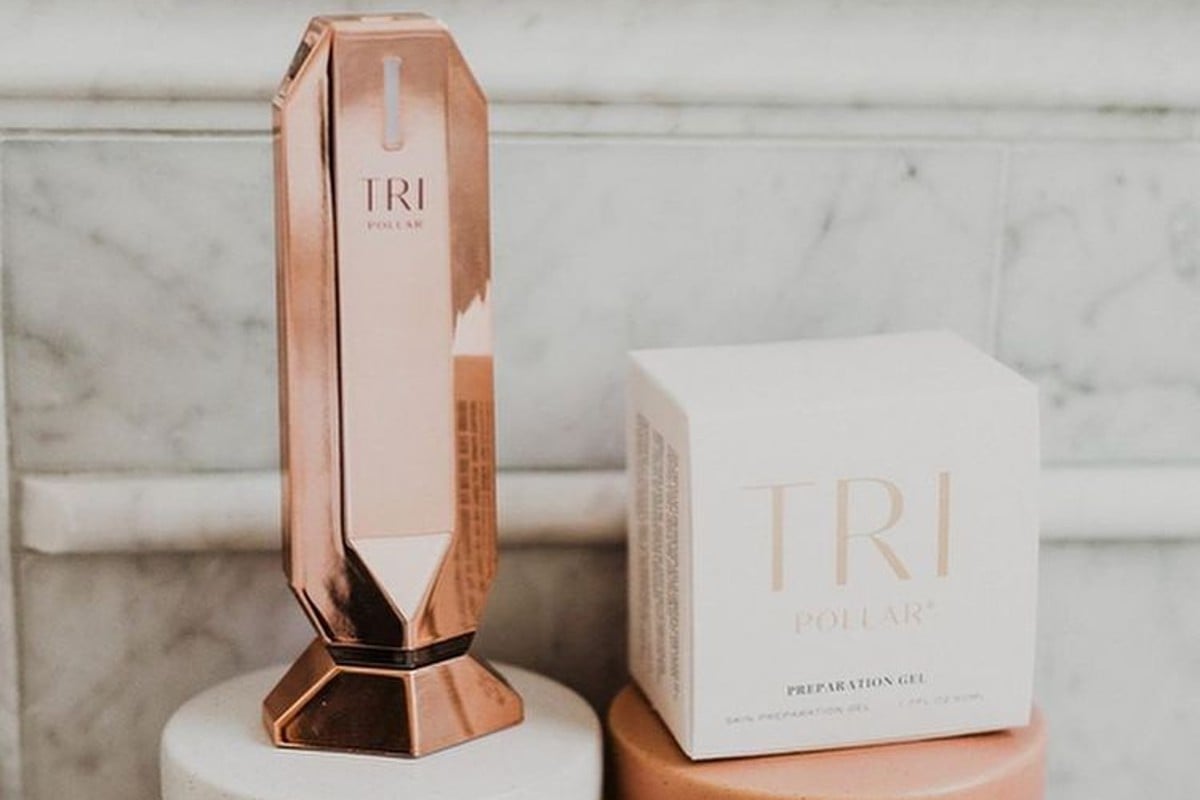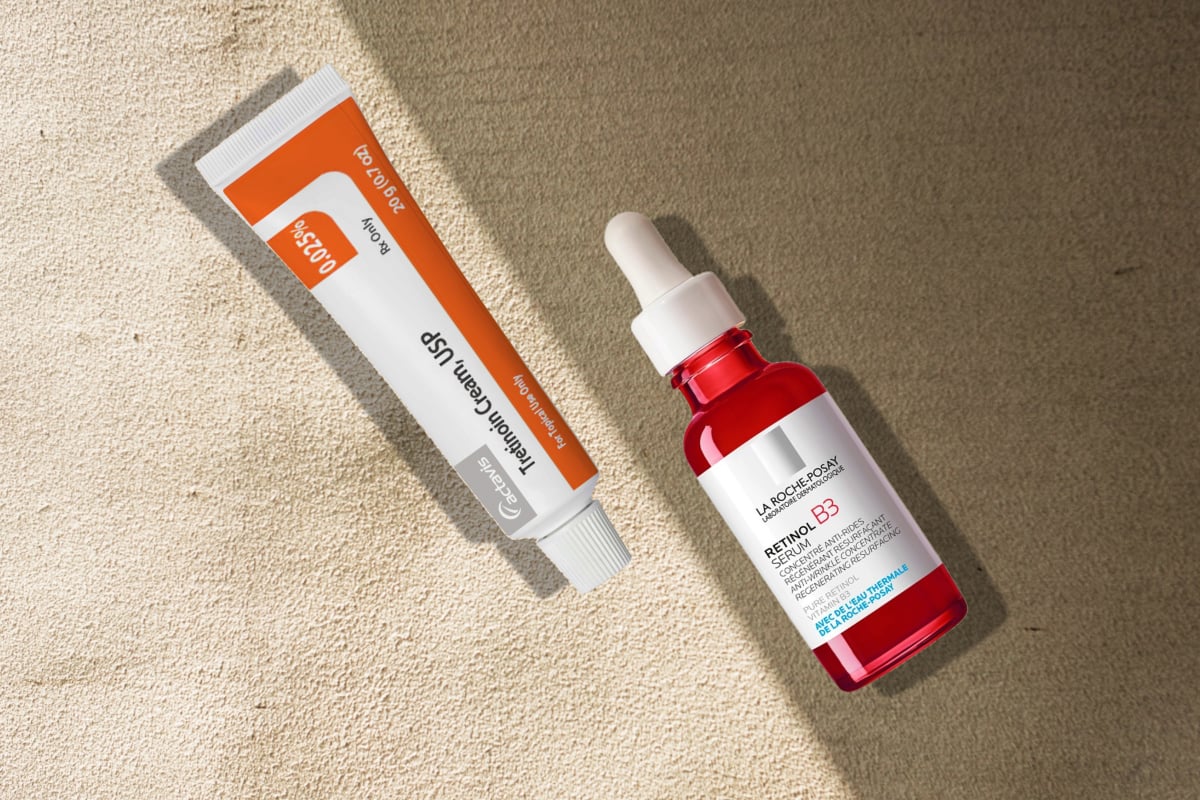Dealing with teenage acne was a real struggle, but this journey led me to try salicylic acid. I remember reading beauty magazines and listening to every word from dermatologists talking about this chemical exfoliant. And guess what? All I could find were good words, so I decided to take a shot. To my luck, salicylic acid turned my skin’s story around, tackling breakouts and blemishes head-on. Since then, I’ve not only read every clinical study about salicylic acid but also tested countless products containing it. Now I’m here to share everything I found.
- What is salicylic acid?
- How does salicylic acid work in skincare?
- Skincare benefits
- Does salicylic acid have side effects?
- How to reduce the side effects
- Who should use salicylic acid?
- Can you use salicylic acid every day?
- Does salicylic acid make your skin sensitive to the sun?
- What's the best time to use salicylic acid?
- Should you moisturize after salicylic acid?
- What to use after salicylic acid
- What to avoid while using salicylic acid
- What else
What is salicylic acid?
Salicylic acid, which we often hear about as a beta-hydroxy acid, is a member of the salicylate family. Salicylates are natural chemicals produced by plants. In the case of salicylic acid, this one comes from willow bark.
Are you familiar with aspirin, right? Well, this is also a salicylate. In fact, regular aspirin is a modified version of salicylic acid. This small change makes aspirin easier on our stomachs. When we take aspirin, our body turns it back into salicylic acid, and that’s what relieves inflammation and pain.
How does salicylic acid work in skincare?
When it comes to skincare, salicylic acid takes a different role as a keratolytic agent. You know, our skin is shedding dead cells on a daily basis, but sometimes these cells stick around longer than we’d like. Salicylic acid dissolves some of the excess keratin on our skin, which breaks down the bonds that hold dead skin cells together. This process is called keratolysis.
But why salicylic acid is such a big deal for those with oily or acne-prone skin? It’s all about size—molecular size, to be exact. Salicylic acid has a small molecular structure, which means it can get down into your pores, not just hang around on the skin’s surface. Plus, it’s oil-soluble. Most substances we use on our skin are water-soluble, meaning they’re good for hydrating but they can’t pass through the skin’s oil layer. Salicylic acid can mix with the oils in our skin, which allows it to go into our pores. Once there, it works to clear out all the gunk, bacteria, and dead cells that lead to acne.
Skincare benefits
Salicylic acid can treat conditions like clogged pores, acne, excess sebum, and rough skin texture. Here’s more about what salicylic acid can do:
Salicylic acid cleans pores and reduces acne
Salicylic acid acts as a pore vacuum. Just think about it. Stuff like excess oil, bacteria, dead skin cells, and dirt can accumulate in your pores and clog them. This is where acne and blackheads come from.
Since it’s soluble in oil, salicylic acid can mix with the oil in your skin and get right into those pores. Once it’s in there, it goes to work like a mini vacuum, dissolving all the gunk and debris stuck in your pores. The result? Your pores are cleared, which means less acne and clearer skin. Better than that, salicylic acid also reduces the growth of acne-causing bacteria.[1]
So yes, using salicylic acid, whether in a face wash or a facial serum, it’s a solid choice for treating mild to moderate acne.
There’s this study I came across in the Journal of the American Academy of Dermatology that shows a face wash with 2% salicylic acid is not only effective in reducing acne, but it’s also gentle and doesn’t dry out the skin.[2]
Just bear in mind that salicylic acid is not a one-size-fits-all solution to acne. While it’s effective for non-inflammatory acne (like blackheads and whiteheads), it doesn’t work as well on inflamed acne (like nodules and cysts). For inflammatory acne, benzoyl peroxide might be a better choice.
Salicylic acid smooths skin texture
The accumulation of dead cells on the skin’s surface can leave your skin rough and dull. However, the keratolytic properties of salicylic acid allow it to break down the bonds between skin cells and promote their shedding.[3] This can also be effective in reducing post-acne marks.
Salicylic acid is an astringent that shrinks pores and reduces sebum production
Are you struggling with large pores and oily skin? Salicylic acid can address both. First, it acts as an astringent. That means it can shrink pores by tightening the skin around them. Plus, salicylic acid reduces excess sebum that tends to get stuck in your pores and make them look even bigger.
It’s a fact that salicylic acid reduces the production of sebum, which is the oil our skin produces. It affects the cells in our skin that produce sebum, telling them to slow down and produce less. By slowing sebum production, salicylic acid can also balance oily skin and reduce the greasy look.
Salicylic acid treats keratosis pilaris
Salicylic acid is one of the best ingredients for dealing with uneven and rough skin texture because it softens and dissolves keratin.
You know, keratin can form a plug that blocks the hair follicle. When this happens, you will see small reddish nodules on your skin that can feel dry and rough. This is known as keratosis pilaris, a common trigger behind strawberry skin. As salicylic acid breaks down keratin, it smooths the skin’s surface and promotes a more refined texture, much like baby-soft skin.
Removes blackheads and sebaceous filaments
Blackheads and sebaceous filaments often look alike, but they are different. Blackheads appear due to clogged pores. Sebaceous filaments, on the other hand, are normal and move sebum (the skin’s natural oil) through the pores. They can look like blackheads because they are dark. Well, salicylic acid not only removes blackheads but also minimizes sebaceous filaments by dissolving the blockage in the pores. It also reduces inflammation in affected areas and inhibits the growth of bacteria that can worsen these conditions.
Salicylic acid reduces inflammation
Salicylic acid works by putting the brakes on certain enzymes that trigger inflammation in cells. This makes it effective for calming swelling, pain, redness, sunburn, and conditions like psoriasis.
Salicylic acid brightens the skin
Over time, our skin cells accumulate melanin—the pigment that darkens skin color. An excess of melanin can cause dark patches and make our skin look uneven. Salicylic acid exfoliates, which means it removes these pigmented cells from the skin’s surface and promotes a brighter appearance.
Does salicylic acid have side effects?
Salicylic acid is not without side effects and can be problematic for sensitive skin. It’s common to face dryness, flaking, and redness after applying salicylic acid products. This is because salicylic acid stimulates cell renewal, a process that involves the shedding of old skin cells and the growth of new ones. As these new cells grow, they often lack the protective substances that mature skin cells have. This causes your skin to become more vulnerable until the new cells form the fat layer for protection. The higher the concentration of salicylic acid, the more severe these side effects will be.
Although it’s normal to have scaly skin and a few dry and red patches here and there, if the side effects do not subside after a few weeks, it is best to take a break from salicylic acid and talk to a dermatologist.
Skin purging (worsening of acne breakouts) in the first few weeks is also a common side effect of salicylic acid. It’s a normal process that occurs due to the accelerated exfoliation process that leads to a temporary surge in dead cells. However, this is a temporary phase and should not be cause for alarm. This phenomenon is often misunderstood as a negative reaction, but it’s a sign that the product is working to bring underlying blemishes to the surface and reduce the formation of acne lesions.
How to reduce the side effects
It’s all about building tolerance. The maximum concentration of salicylic acid in OTC products is 2%. However, that can be too much to handle for the first time. I’d say start with a product with a mild concentration, like salicylic acid 0.5%, to allow your skin to acclimate. Remember, less is often more. Avoid applying an excessive amount of product and make sure your skin is hydrated by applying a moisturizer with soothing and hydrating ingredients. If you experience swelling or redness, listen to your skin—use the product less often or try gentler products with salicylic acid.
Related: 13 Gentler Salicylic Acid Alternatives
Who should use salicylic acid?
Salicylic acid is most effective for people with oily and acne-prone skin, large pores, keratosis pilaris, and rough skin texture. On the other hand, if you have severely dry, sensitive skin or eczema it’s best to avoid it.
Can you use salicylic acid every day?
Whether or not you can use salicylic acid every day depends on the product at hand, the percentage of active ingredients in the formula, and how tolerant your skin is to exfoliation. Products such as cleansers, toners, and mild serums that contain salicylic acid are formulated for daily use. However, if we are talking about a facial peel with 2% salicylic acid, you should not use it more than three times a week.
Does salicylic acid make your skin sensitive to the sun?
While we often hear that chemical exfoliants make our skin more sun-sensitive, salicylic acid is a bit different. Unlike glycolic acid, which can increase the risk of sunburn, studies show that salicylic acid does not make your skin more prone to sun damage.[4] In fact, some research even suggests it might protect against UV damage by blocking the formation of sunburn cells.[5] However, salicylic acid can still leave your skin more vulnerable to sun damage until it heals. That’s why you should sunscreen.
What’s the best time to use salicylic acid?
Although it’s best to apply salicylic acid in your nighttime routine to avoid exposing the exfoliated skin to the sun, you can also use it in your morning routine. But make sure you apply board-spectrum sunscreen.
Should you moisturize after salicylic acid?
Yes, you should moisturize after using salicylic acid. Salicylic acid can dry the skin, so applying a moisturizer will restore the skin’s balance.
What to use after salicylic acid
After salicylic acid, it’s best to use a lightweight moisturizer with a non-comedogenic formula that aids in hydrating the skin and restoring the moisture barrier. Look for moisturizers containing hyaluronic acid, glycerin, squalane, peptides, fatty acids, and ceramides.
What to avoid while using salicylic acid
- Don’t use salicylic acid with other exfoliating products, like scrubs or chemical acids. This can lead to over-exfoliation and irritation.
- Don’t use salicylic acid at the same time as retinol or benzoyl peroxide. You can use salicylic acid in the morning and retinol at night.
- Don’t use harsh cleansers. Harsh cleansers containing astringents and alcohol can remove skin moisture, which can worsen the drying effects of salicylic acid.
What else
- Avoid using salicylic acid on sensitive areas.
- Avoid using it on broken or irritated skin.
- Patch test the product first before applying it all over your face.
- Tingling is normal and usually subsides quickly.
- Pair salicylic acid with benzoyl peroxide to fight more severe acne.
- Consistency is key. Use salicylic acid for at least six weeks. This is the average time of a complete cell cycle and allows your skin enough time to show results.
- Minimize sun exposure when using salicylic acid.
- Don’t apply occlusives over salicylic acid. Occlusives like petrolatum, silicones, and waxes, can block the shedding of dead cells and clog the pores.
Read next: 13 Best Salicylic Acid Serums To Banish Acne
References
Women’s Concepts uses reliable sources, including dermatologists’ insights, clinical trials, and scientific journals, to find accurate information and support all the facts shared in our articles. All statements and claims have clear and legit references. Read our editorial policy to learn more about our sources of information, our process of researching and fact-checking the content, and how our team strives to keep all articles updated, completed, and trustworthy.
- Fox L, Csongradi C, Aucamp M, du Plessis J, Gerber M. Treatment Modalities for Acne. Molecules. 2016 Aug 13;21(8):1063. doi: 10.3390/molecules21081063. PMID: 27529209; PMCID: PMC6273829.
- Woodruff, Ja & Appa, Yohini. (2013). A double-blind, placebo-controlled evaluation of a 2% salicylic acid cleanser for improvement of acne vulgaris. AB12-AB12.
- Arif T. Salicylic acid as a peeling agent: a comprehensive review. Clin Cosmet Investig Dermatol. 2015 Aug 26;8:455-61. doi: 10.2147/CCID.S84765. PMID: 26347269; PMCID: PMC4554394.
- Kornhauser A, Wei RR, Yamaguchi Y, Coelho SG, Kaidbey K, Barton C, Takahashi K, Beer JZ, Miller SA, Hearing VJ. The effects of topically applied glycolic acid and salicylic acid on ultraviolet radiation-induced erythema, DNA damage and sunburn cell formation in human skin. J Dermatol Sci. 2009 Jul;55(1):10-7. doi: 10.1016/j.jdermsci.2009.03.011. Epub 2009 May 2. PMID: 19411163; PMCID: PMC2791365.
- Mammone T, Gan D, Goyarts E, Maes D. Salicylic acid protects the skin from UV damage. J Cosmet Sci. 2006 Mar-Apr;57(2):203-4. PMID: 16758568.




![Does resveratrol in red wine benefit your skin? While sipping on a glass of red wine can be a delightful experience, relying on it for skincare benefits is not the best idea. Sure, red wine contains a smidge of resveratrol, but let's put things into perspective. The concentration of resveratrol in red wine is relatively low. Red wines, specifically Pinot noir from France, typically contain 0.361-1.972 mg of resveratrol per liter.[8] To hit that reference dose of 500mg of resveratrol, you'd need to drink a lot of wine. We're talking about downing anywhere from 100 to 1000 glasses per day. It's a scene straight out of a wine lover's wildest dreams, but definitely not the healthiest approach. Resveratrol Benefits for Skin](https://womensconcepts.com/wp-content/uploads/2022/03/Resveratrol-Benefits-for-Skin.jpg)
